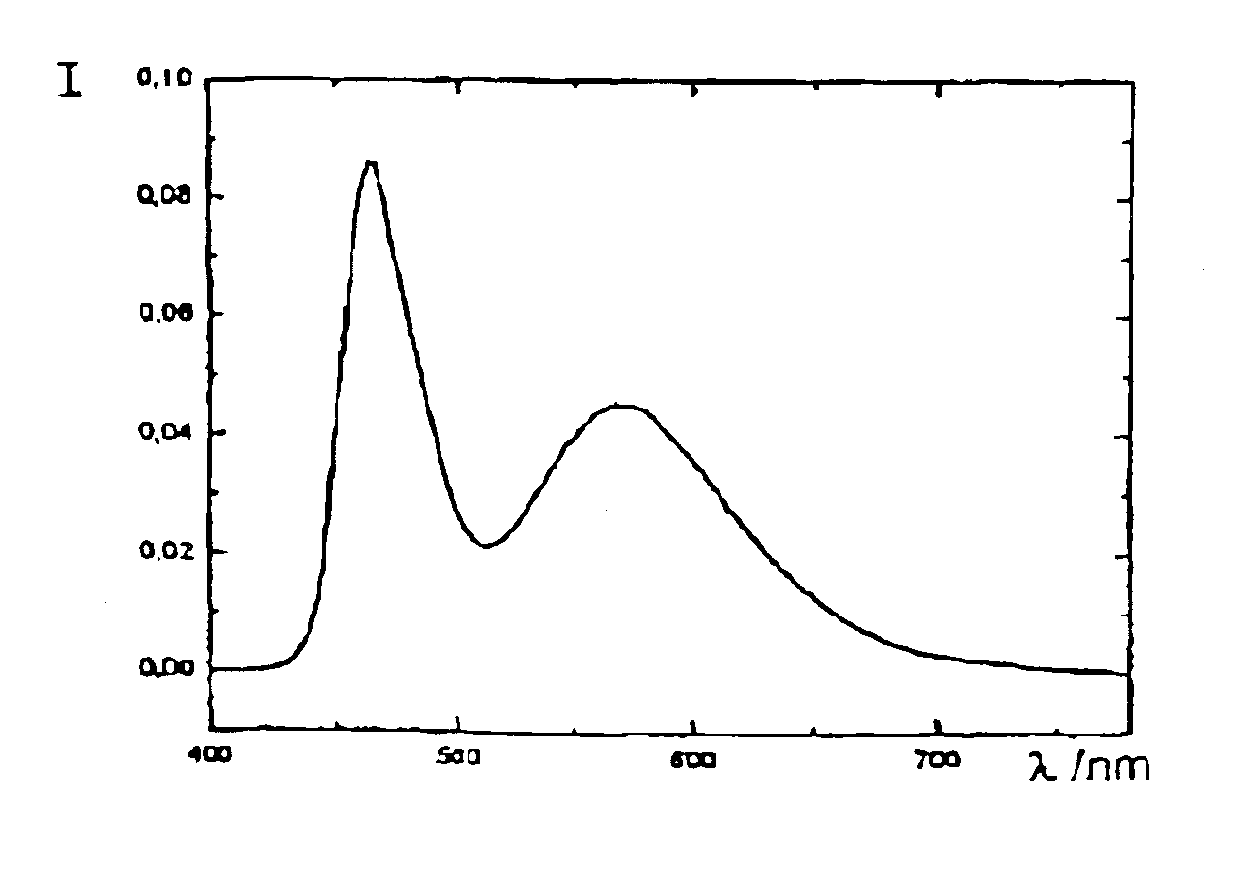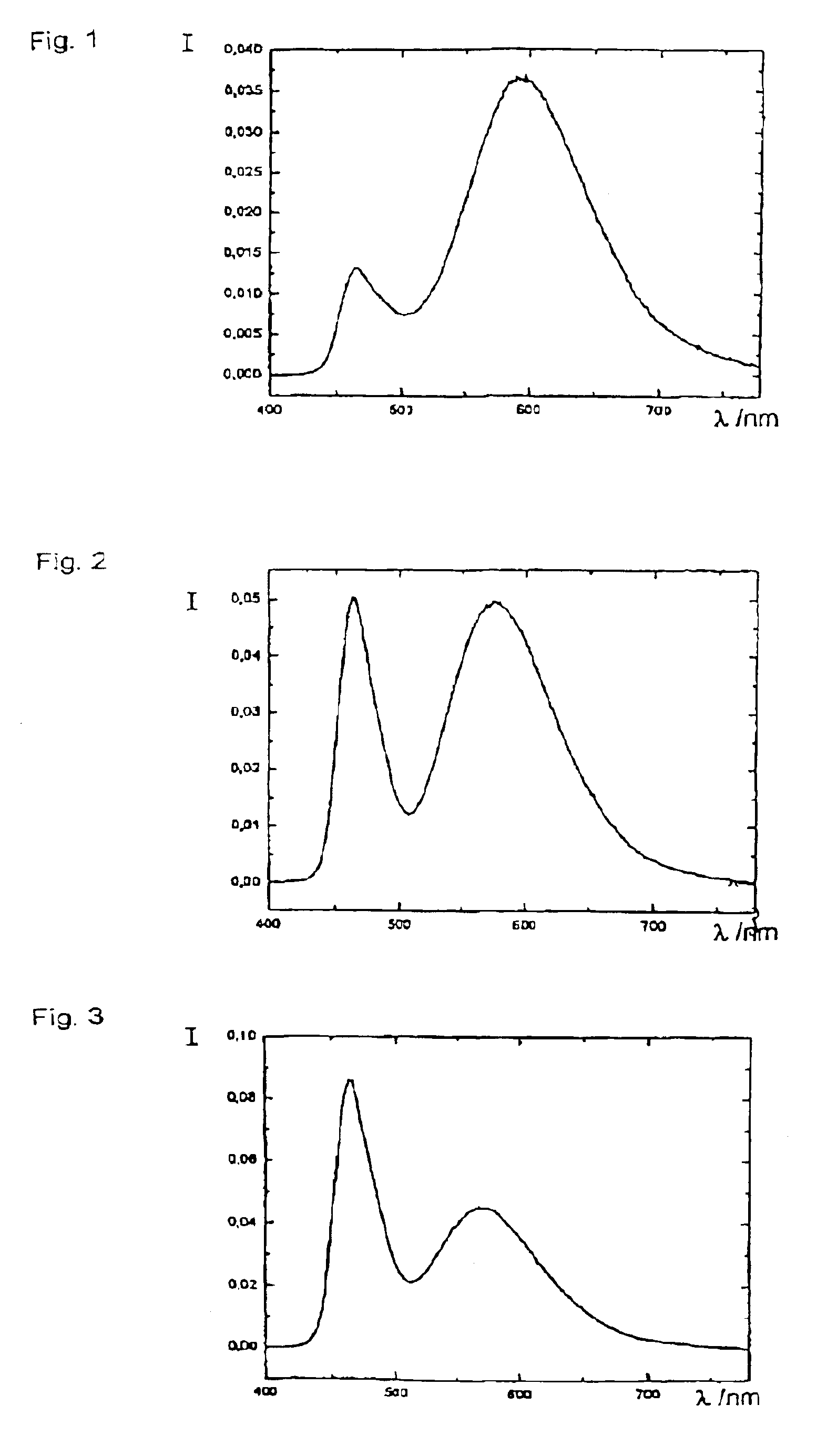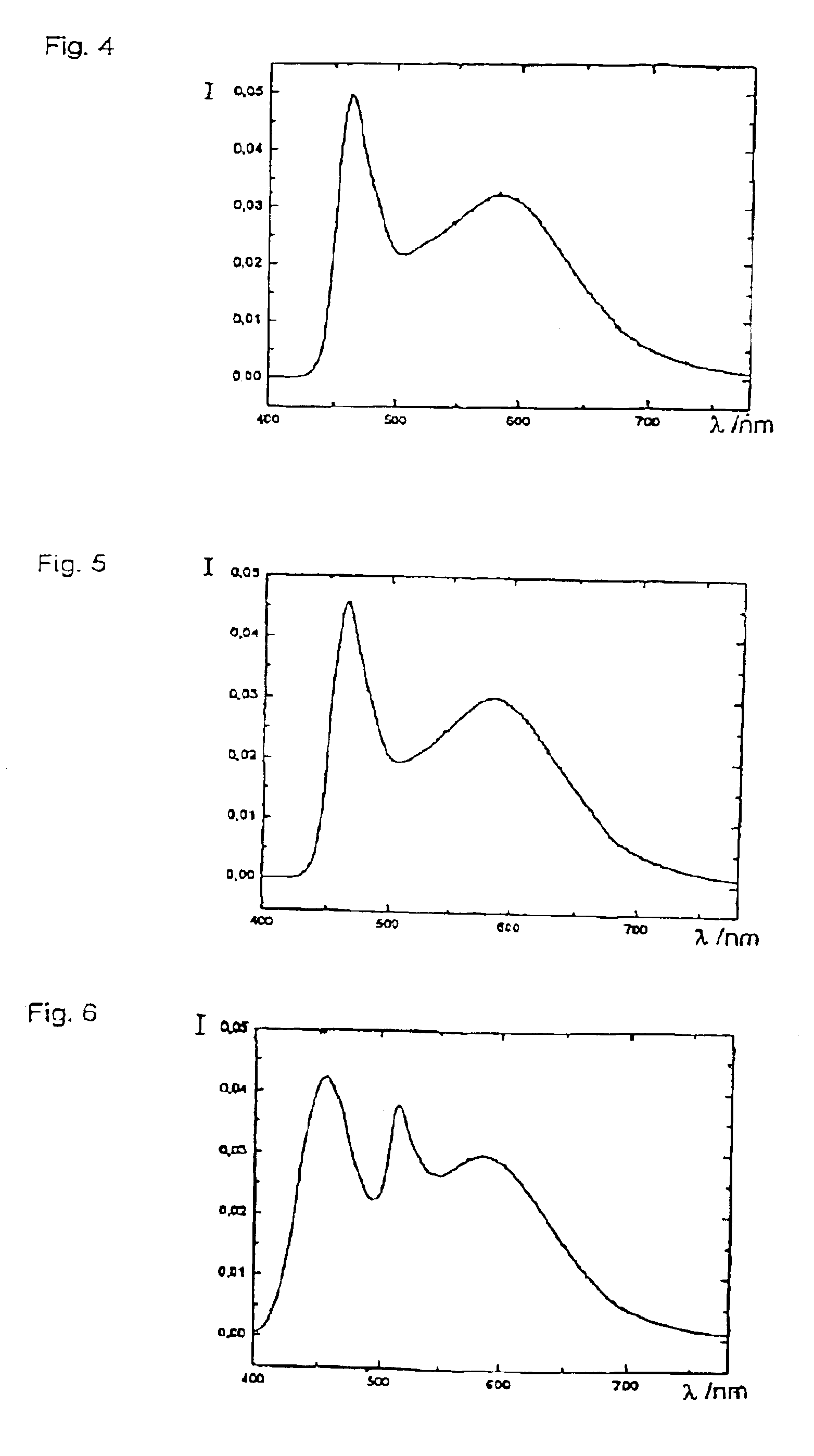Light source comprising a light-emitting element
a light-emitting element and light-emitting element technology, which is applied in the direction of discharge tube luminescnet screens, lighting and heating apparatuses, instruments, etc., can solve the problems of limited number of inorganic luminophores that meet these specifications, inefficient realization, and inability to realize emission colors, especially wide-band spectral colors
- Summary
- Abstract
- Description
- Claims
- Application Information
AI Technical Summary
Benefits of technology
Problems solved by technology
Method used
Image
Examples
embodiment examples
BEST EMBODIMENT EXAMPLES OF THE INVENTION
FIG. 1 shows the emission spectrum of a white LED with a color temperature of 2700 K that is formed by combination of a LED emitting blue light with effective wavelength of 464 nm with luminophore based on the invention of composition (Sr.sub.1.4 Ca.sub.0.6 SiO.sub.4 :Eu.sup.2+) that emits light in a second spectral region with a maximum value of 596 nm.
Further examples for the combination of an LED emitting light at 464 nm with one of the ortho-silicate luminophores are shown in FIGS. 2 and 3. If a yellow-emitting luminophore of composition (Sr.sub.1.90 Ba.sub.0.08 Ca.sub.0.02 SiO.sub.4 :Eu.sup.2+) is used for color conversion, a white-light color with color temperature of 4100 K may be set, but with use of the luminophore (Sr.sub.1.84 Ba.sub.0.16 SiO.sub.4 :Eu.sup.2+), for example, a white-light color with color temperature of 6500 K may be obtained.
FIG. 4 shows the typical spectrum for the combination of a 464-nm LED with two ortho-silicat...
PUM
| Property | Measurement | Unit |
|---|---|---|
| Ra | aaaaa | aaaaa |
| Ra | aaaaa | aaaaa |
| Ra | aaaaa | aaaaa |
Abstract
Description
Claims
Application Information
 Login to View More
Login to View More - R&D
- Intellectual Property
- Life Sciences
- Materials
- Tech Scout
- Unparalleled Data Quality
- Higher Quality Content
- 60% Fewer Hallucinations
Browse by: Latest US Patents, China's latest patents, Technical Efficacy Thesaurus, Application Domain, Technology Topic, Popular Technical Reports.
© 2025 PatSnap. All rights reserved.Legal|Privacy policy|Modern Slavery Act Transparency Statement|Sitemap|About US| Contact US: help@patsnap.com



